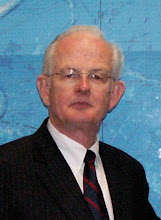The notion of “apostolic succession” assumes that the priesthood authority bestowed upon the apostles by Jesus Christ in the meridian of time has been passed on from that day to this through an unbroken succession of church leaders. This doctrine is central to the Roman Catholic claim that they are the true church of Christ in our day. If this is so, those Protestant churches among us are left to justify how dissenters from Catholicism may claim to exercise legitimate priesthood authority.
It is not intended that this writing should be a comprehensive presentation on the subject of apostolic succession. Rather, my intent is to simply present several apparent obstacles to the validity of this doctrine, that seem to me must rationally be explained away by those claiming priesthood authority by this means.
The first and most obvious hurdle with which the apologists of apostolic succession must concern themselves is the reality of specific Biblical writings that do not justify the notion of an unbroken line of authority existing from Peter’s day until ours. On the desk in front of me are twenty-nine Biblical references concerning the “Apostasy of the Early Christian Church” (See the “Topical Guide” in the Bible used by English speaking Latter-day Saints). The scriptures to which these references direct the reader are the revelations and teachings of Jesus Christ as recorded by His prophets in Old Testament times as well as the apostles and other church leaders of the original Church in New Testament times. These writings commence with the prophesy of Isaiah concerning the fall of early Christendom: “The earth also is defiled under the inhabitants thereof; because they have transgressed the laws, changed the ordinance, broken the everlasting covenant” (Isaiah 24:5) or the gospel of Jesus Christ in its fulness. In the twenty-fourth chapter of Matthew, the Lord admonished His disciples “privately” to not be misled by the enemy into believing that His second coming would occur during their lifetime: “For many shall come in my name, saying, I am Christ; and shall deceive many” (Matthew 24:5). His apostles would not have been among those so deceived inasmuch as they had known Him personally. Concerning those things which must first transpire before the second coming of the Savior, Paul writing to the Thessalonians advised, “Let no man deceive you by any means: for that day shall not come, except there come a falling away first, and that man of sin be revealed, the son of perdition.” (2 Thessalonians 2:3).
The second ominous hurdle confronting the apologists of apostolic succession is to be found in the teachings of Jesus Christ to His apostles during the forty days He was with them following His resurrection. While canonized scripture is essentially devoid of any specific information concerning what the Lord taught his apostles during that time, apocryphal sources are not. Of that which is known, the relevant material for this writing concerns the understanding the apostles received from the Savior pertaining to the coming apostasy. The apocryphal writings “paint a very gloomy picture. In all of these accounts, the apostles ask the Lord, ‘What’s going to happen to us now? What’s going to happen to the church? Why are we going to all this trouble in this dispensation if it’s all going to be taken away?’ The Lord tells them, This is for two generations now, then it’s going to be taken away; a lesser church will be left in its place; it will be kept on the fire, so to speak; the true church will return later when I return with my Father. This of course was a doctrine the Christians didn’t like. It was very bad news for the later church to have the Lord telling the apostles that all these things were going to be taken away. Yet he had said the same thing in several places in the New Testament. The documents make this very clear, thus these teachings were unpopular” (Hugh Nibley, “Apocryphal Writings,” Temple and Cosmos, 298).
The final obstacle the apologists of apostolic succession must successfully scale if their arguments are to be found worthy of serious consideration is the historical record itself covering the Dark Ages, the Middle Ages, and the Renaissance. A very readable and revealing history of this period was written some years ago by William Manchester, a professor of history at Wesleyan University. It is entitled, A World Lit Only By Fire. How appropriate this title is even if it partially misses the point. From his secular perspective, Mr. Manchester views the two eras preceding the Renaissance as essentially being devoid of any discernible heavenly blessing of enlightenment. Thus during this period, the only light that benefited humanity living in the Western World was of their own making and by natural means. For those who understand the true gospel of Jesus Christ, the Light of Christ was also present during these dark times to persuade as it could mankind toward thoughts and actions of personal honesty, self improvement, and piety. However, quite clearly, the forces of the evil one most often held the upper hand, and the depravity and debauchery foisted upon the society by both the religious and the secular aristocracies is beyond our comprehension by even the standards of the honorable of the earth in our day.
As the Savior Himself testified to the apostles of the early Church, after a period of apostasy His true Church would be restored to the earth at some later time when both He and His Father should appear once more to man. However, before that great day, the way for the restoration of the gospel of truth would necessarily require that the two stifling, God-contrary, monolithic institutions of the Middle Ages namely, the state (monarchy) and the church, be broken by the forces of change operative during the periods of the Renaissance and the Enlightenment.

No comments:
Post a Comment